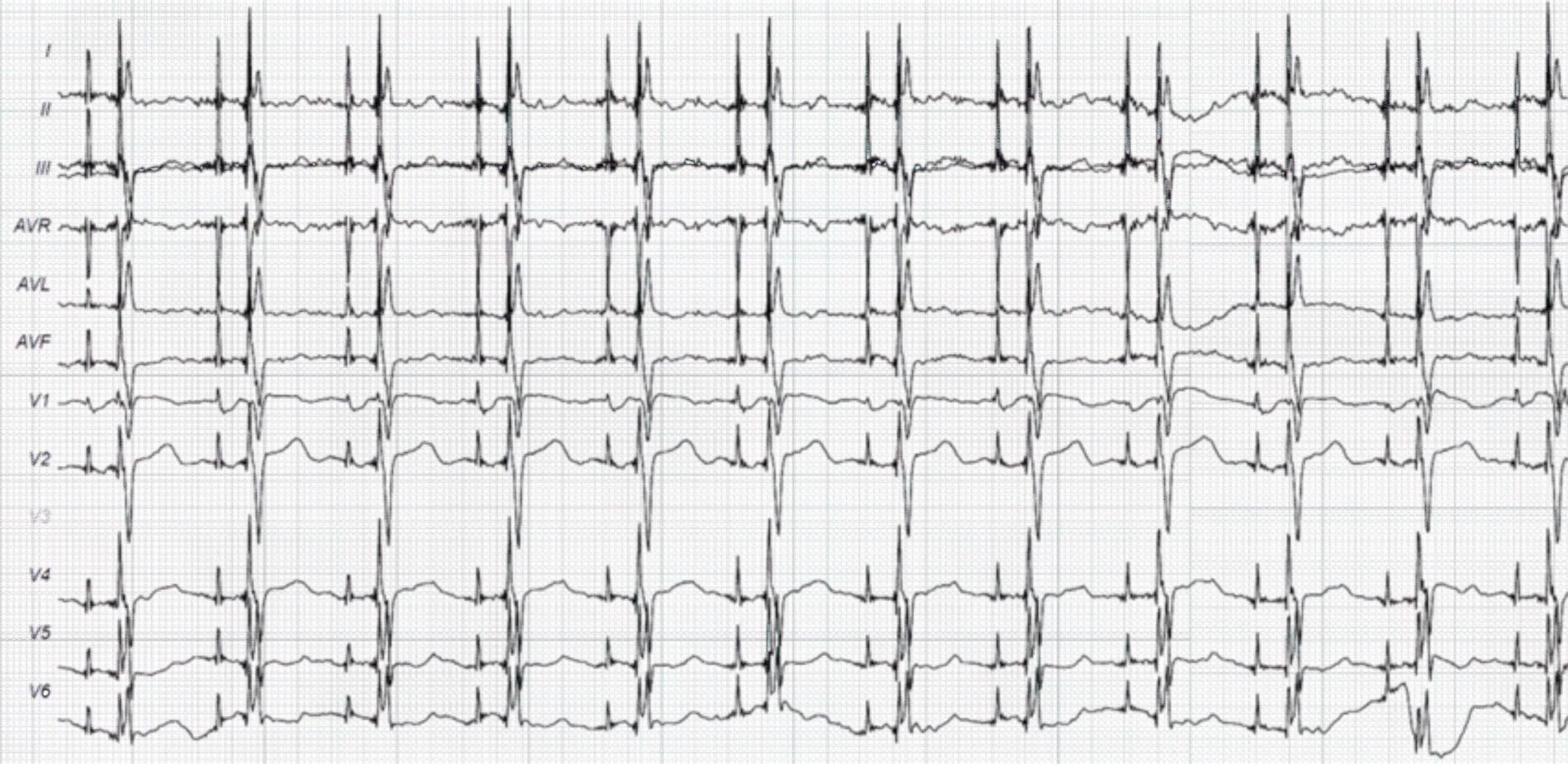Double-Chamber Pacemaker
Double-chamber pacemakers have electrodes in both the right atrium and right ventricle. The dual electrodes allow for sequential atrioventricular pacing. The device paces the right atrium first and then the left atrium if it senses a slower atrial rate than the pacing rate. The spike produced from the atrium by the pacemaker is visible at the beginning of the P wave. If there is spontaneous activation of the atria (because the spontaneous atrial rate is higher than the atrial pacemaker rate), there will be no atrial spikes.

Dual-Chamber Pacing ECG Rhythms
The ECG above is from a patient with atrial-ventricular pacing (lead V3 excluded for better visualization). The atrial and ventricular pacing spikes are visible before each QRS complex. Small P waves following each atrial pacing spike throughout the ECG strip signify a 100% atrial capture. The QRS complex following each ventricular pacing spike throughout the ECG strip signifies a 100% capture.